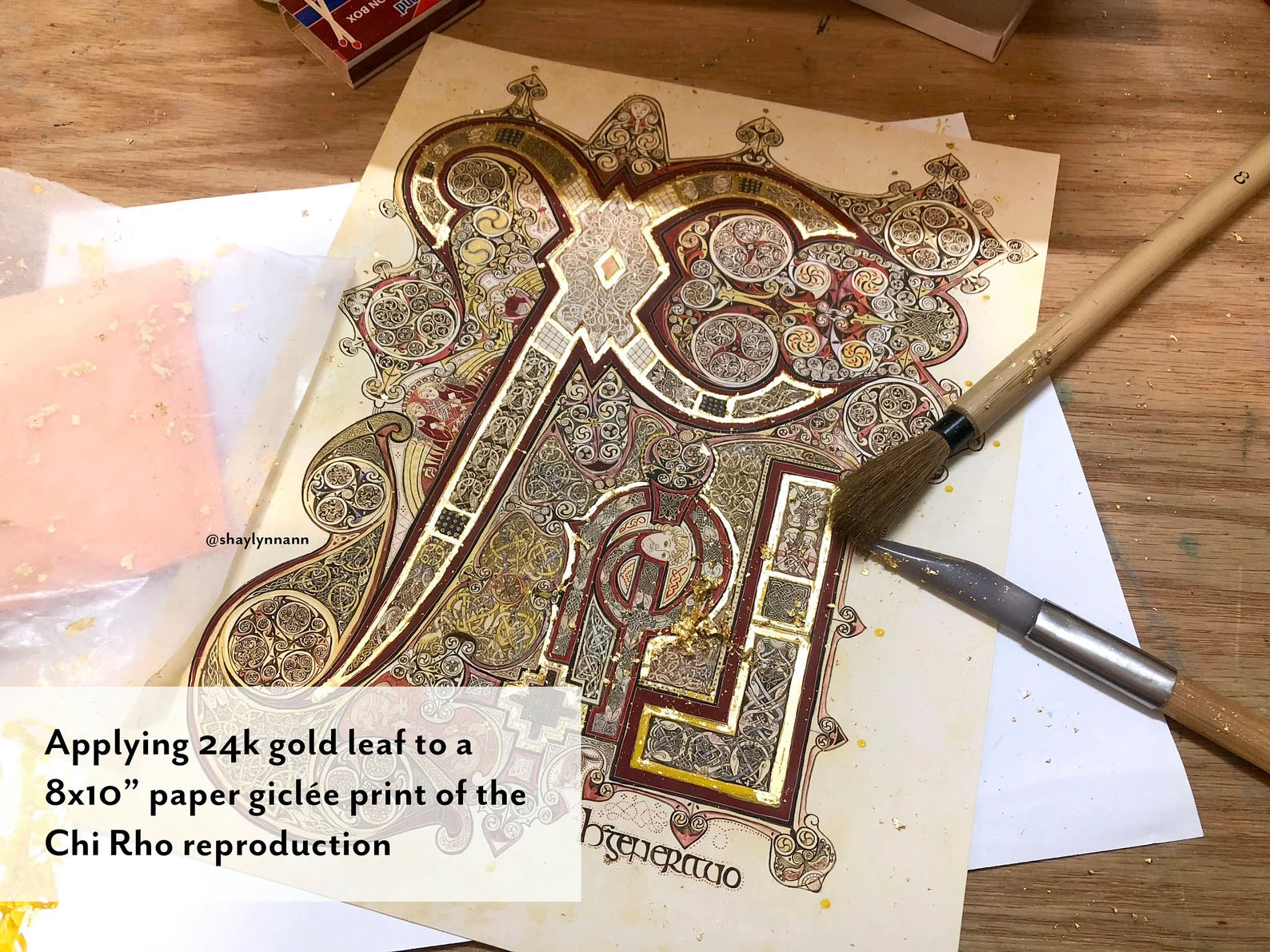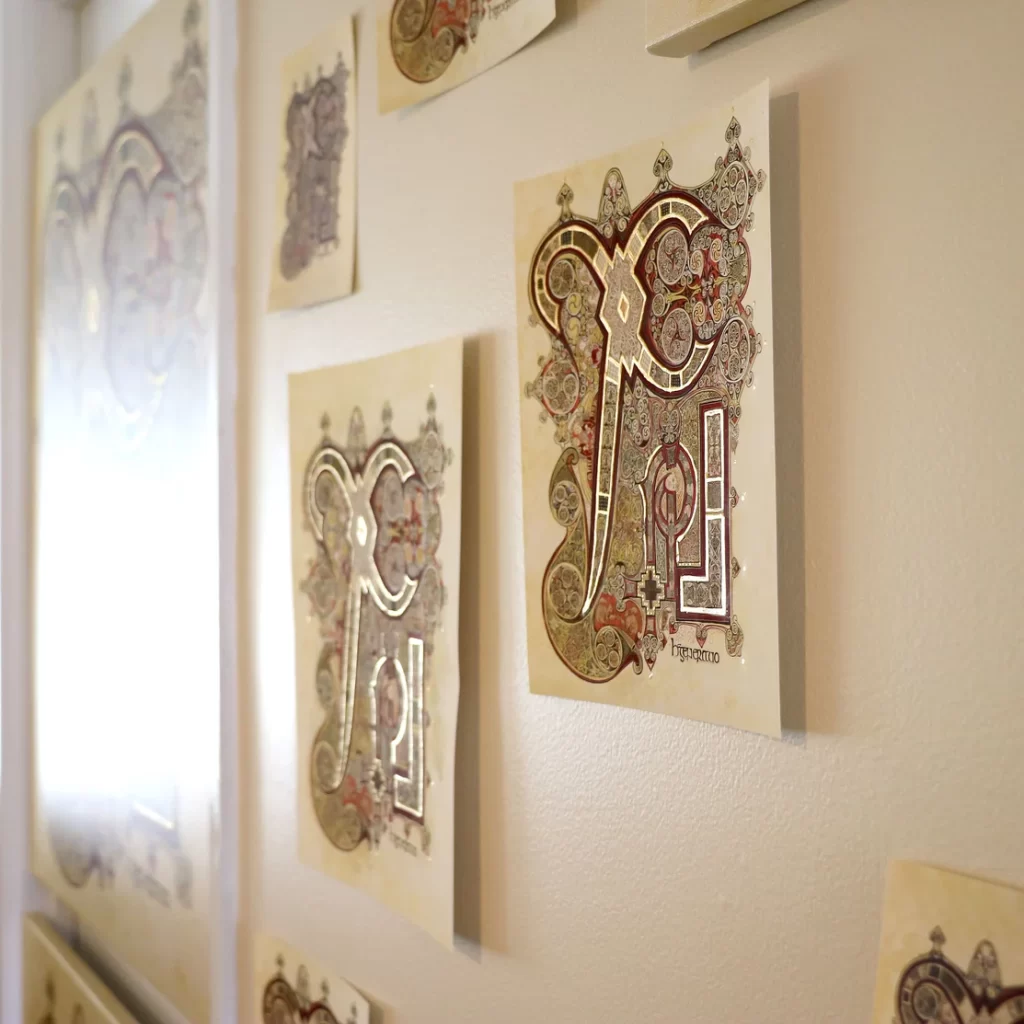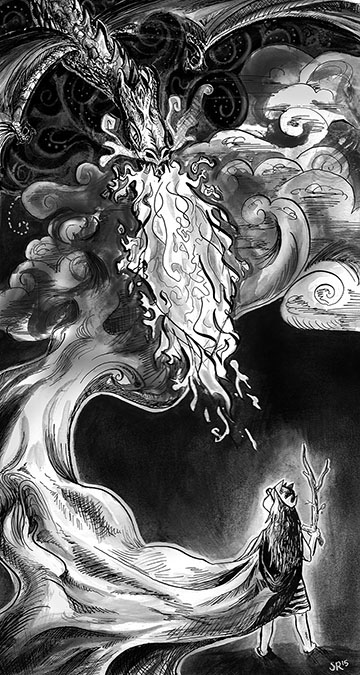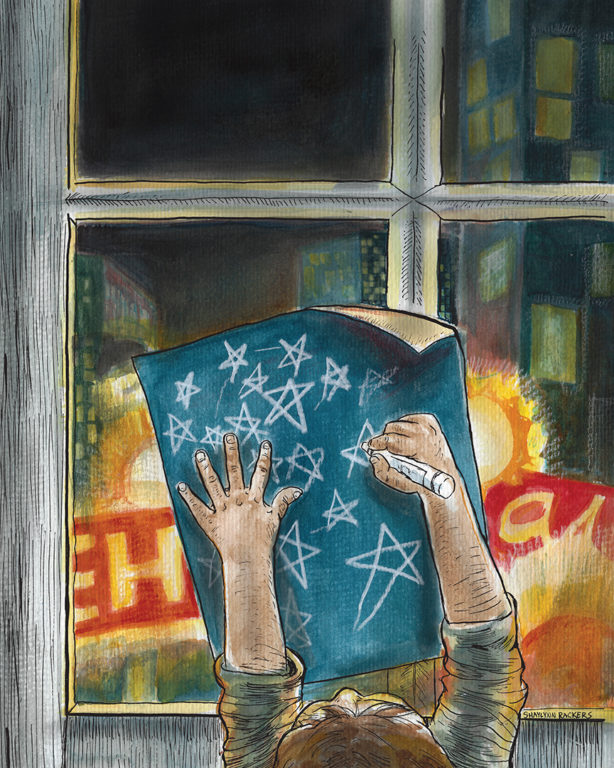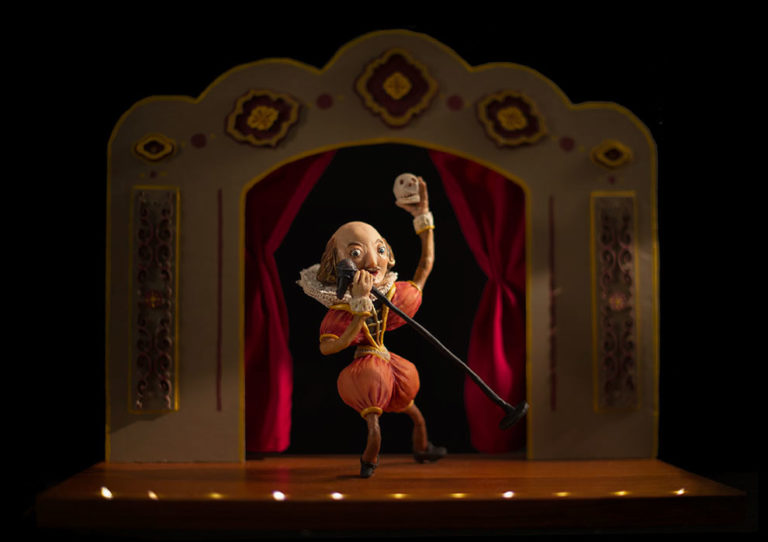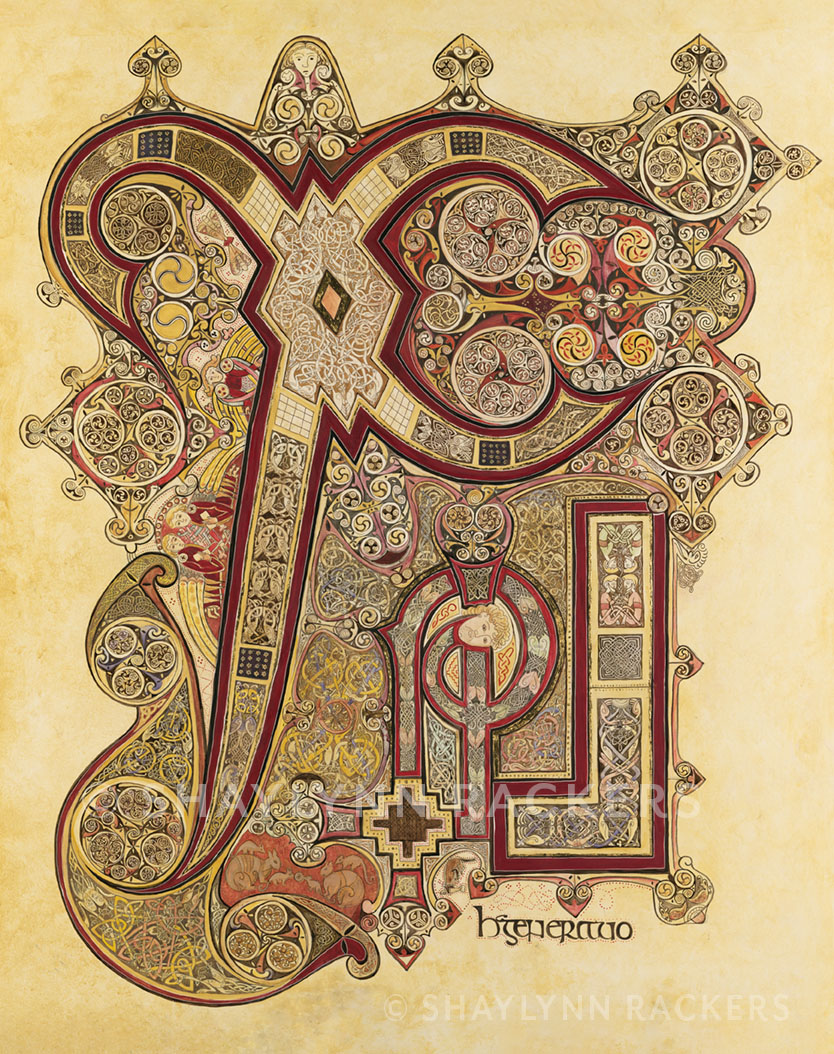
Artist Statement
This reproduction of the Chi Rho from the Book of Kells was commissioned approximately 1,100 years after the original was painted by Columban monks in Iona, Ireland. The Book of Kells is a masterwork of Christian art; the illuminated manuscript contains all four Gospels written in energetic calligraphy paired with extravagant illustrations and complex ornamentation.
The Chi Rho page is an intricate meditation on the Incarnation of Christ. The unknown artist used the full extent of his artistic talents to honor the word of God. The page introduces the Gospel of Matthew, verse 1:18: Christi autem generatio sic erat—Now the birth of Christ came about in this way. The painting predominately features the word Christ. Although the rest of the manuscript is written in Latin, this page uses the the Greek letters X (chi), P (rho) and I (iota) as an abbrevia- tion for Christ’s name (a tradition dating back as far as the first Christian emperor, Constantine, who saw the ☧ in a dream when he was told “in this sign you will conquer.”) The stylized chi dominates the space, with one arm swooping across the majority of the page, nestling the other letters under its wing. The letters burst into a joyful shout, filling the page with lavish celtic knotwork. Dozens of miniature animals, people, and angels are hidden in the patterns.
I was honored to spend many hours studying this design while creating this painting. My reproduc- tion is painted in egg tempera and archival ink on a wood paneling prepared with kaolin clay.
24 karat gold leaf adds illumination, especially in natural light. The panel is approximately three hundred percent larger than the original vellum painting; the minuscule detail and quality of the original is truly astonishing. I worked at times with single-hair brushes and still was unable to capture every detail. The original was damaged in a Viking raid, where the jewel-encrusted gold binding was stolen and the rest of the manuscript left lying in a ditch. This, plus a millennia of aging, meant that I needed to fill in some blanks with patterns of my own.
It was a unique participation in the creative process of another artist; I found myself wonder- ing about the life of the monk who so prayerfully considered every element, and smiled when I noticed tiny ink smudges, wobbly lines, or mathematical errors in the knots—we are all human, after all.
The structured design is almost fractal, revealing further intricacies the closer you look. Curves and flourishes are embellished with the discs and spirals typical of the Celtic artistic tradition. These designs in turn are packed with patterns so small they are vanishingly faint. I was constantly surprised, when following the trail of a knot, to find that one end contained the head of an animal and the other its feet. There are animals of the earth, sea, and sky which emphasize God’s role as Creator. Birds are especially common; as creatures of the air, I think they represent the meeting of heaven and earth through Christ’s incarnation.
Inside the chi is a cross-like lozenge shape with human beings in each corner, symbolizing both the four gospel writers and the four corners of the earth. To the left of the monogram, three angels herald Christ’s coming while a moth, symboling resurrection, flies above them.
Near the bottom of the page, cats and mice hold what appears to be a Eucharistic host; this is the analogy of the lion lying down with the lamb, reimagined with animals that lived in the Irish monastery. An otter holding a fish illustrates ancient legends about animals bringing food to the monastery during times of famine. Sometimes, a knot circles back in on itself with no beginning or end; this is art that intentionally looks towards eternity.
This Chi Rho design takes what could be simple letters on a page and transforms it into a master- piece. Its context as part of the Christian tradi- tion honoring the Word of God brings to mind another Gospel verse, this time from John:
And the Word was made flesh,
and dwelt among us,
and we saw His glory,
the glory as of the only begotten of the Father, full of grace and truth.
Watch the full process on YouTube
